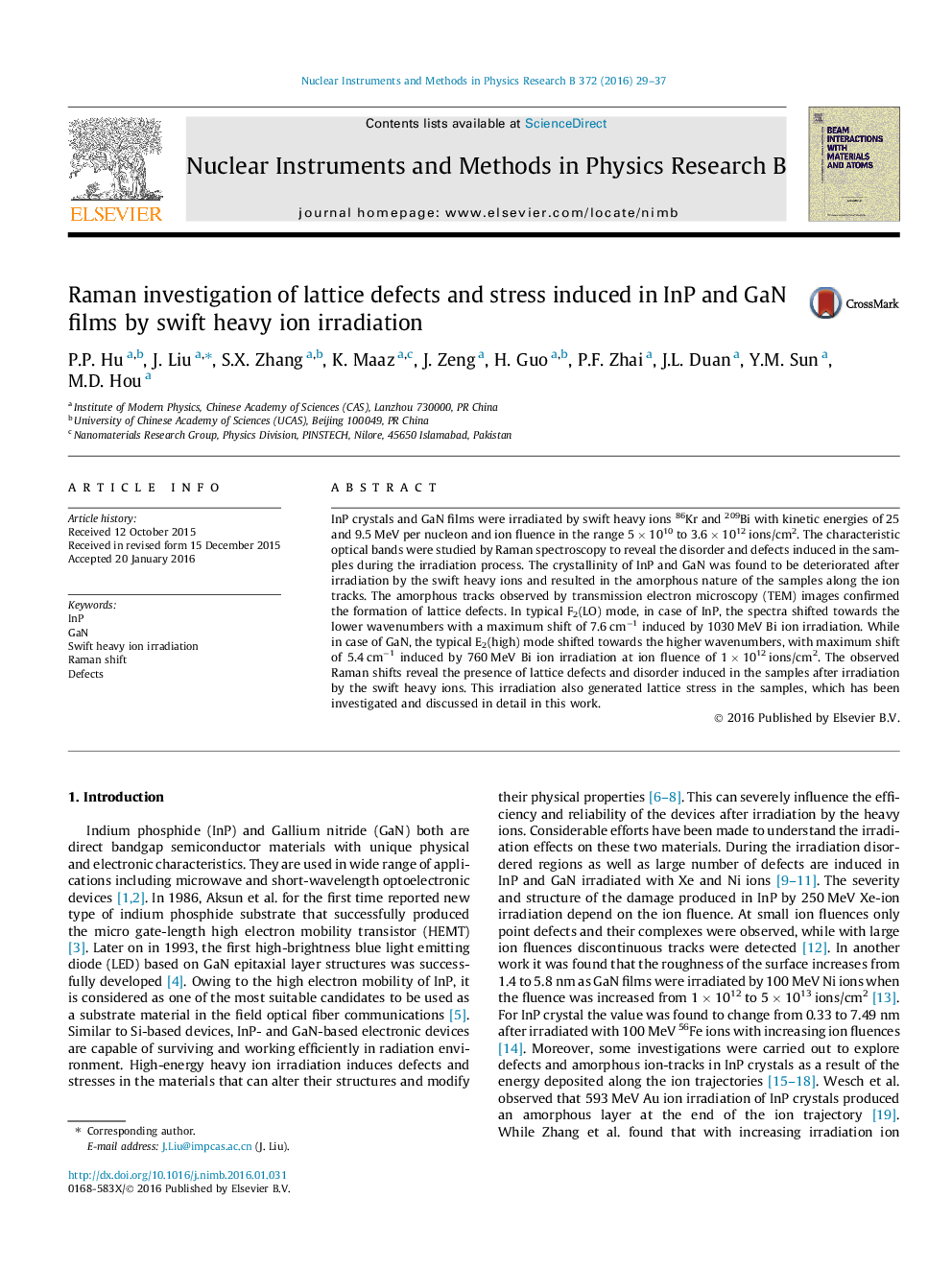| Article ID | Journal | Published Year | Pages | File Type |
|---|---|---|---|---|
| 8039933 | Nuclear Instruments and Methods in Physics Research Section B: Beam Interactions with Materials and Atoms | 2016 | 9 Pages |
Abstract
InP crystals and GaN films were irradiated by swift heavy ions 86Kr and 209Bi with kinetic energies of 25 and 9.5Â MeV per nucleon and ion fluence in the range 5Â ÃÂ 1010 to 3.6Â ÃÂ 1012Â ions/cm2. The characteristic optical bands were studied by Raman spectroscopy to reveal the disorder and defects induced in the samples during the irradiation process. The crystallinity of InP and GaN was found to be deteriorated after irradiation by the swift heavy ions and resulted in the amorphous nature of the samples along the ion tracks. The amorphous tracks observed by transmission electron microscopy (TEM) images confirmed the formation of lattice defects. In typical F2(LO) mode, in case of InP, the spectra shifted towards the lower wavenumbers with a maximum shift of 7.6Â cmâ1 induced by 1030Â MeV Bi ion irradiation. While in case of GaN, the typical E2(high) mode shifted towards the higher wavenumbers, with maximum shift of 5.4Â cmâ1 induced by 760Â MeV Bi ion irradiation at ion fluence of 1Â ÃÂ 1012Â ions/cm2. The observed Raman shifts reveal the presence of lattice defects and disorder induced in the samples after irradiation by the swift heavy ions. This irradiation also generated lattice stress in the samples, which has been investigated and discussed in detail in this work.
Related Topics
Physical Sciences and Engineering
Materials Science
Surfaces, Coatings and Films
Authors
P.P. Hu, J. Liu, S.X. Zhang, K. Maaz, J. Zeng, H. Guo, P.F. Zhai, J.L. Duan, Y.M. Sun, M.D. Hou,
